The Romans did not tear down the temples of Palmyra the morning they took over and settled in the strong kingdom of the East. Rather, they annexed the new antiquity and theatre to demonstrate the wealth of the cultural and artistic movement of that time. Nor did the city witness the destruction and shattering of its treasures despite the changing of civilizations and the outbreak of wars both before and after the beginning of Islam and until recent history.
But, according to Syrians during the reign of the former president Hafez al-Assad (1970-2000), the city’s name was not associated with the well-known relics and landmarks that it is now known for, but with its famous prison, which had approximately two thousand prisoners in 1980, and the massacre that was executed there by the government’s armed forces. This is the history that led to the city’s registration as a World Heritage site of the The United Nations Educational, Scientific and Cultural Organization (UNESCO).
Since the rise of the revolution against Bashar al-Assad, Palmyra has joined the map of revolutionary cities, but the Regime remained in control for two years, until May 2015, when al-Assad’s forces unexpectedly withdrew and the Islamic State was able to enter the city. Then, on March 28th of this year, al-Assad’s forces returned with reinforcements from foreign and local militias, and aerial cover from the Russians, and orchestrated an unprecedented seizure of the city.
In its ten-month rule of Palmyra, the Islamic State was responsible for the destruction of sections of the city’s relics, as well as the migration of most of its population. Palmyra became a ghost town, with black flags rising above it and continuous shelling along its sides. So the city alternates between the combat planes of the Regime, the Russian air force, and the international alliance against the Islamic State, as led by the United States of America.
Ancient History
The establishment of Palmyra, in the ancient Arab Kingdom, goes back approximately 30 centuries B.C., around the same time the ancient manuscripts were revealed. The manuscripts cite that the city of Palmyra succeeded the Canaanites, the Amorites, and the Arameans, and give it its current name.
The apogee of Palmyra’s flourishing arrived in the third and fourth centuries B.C., but the city did not become an Arab Emirate until the second century A.C.. It was around that time too that it became the trade capital between the East and the West (the Silk Road). Ruled by an Arab family, among its most famous kings are Odaenathus I, Hiran, Odaenathus II and his wife Zenobia, the most famous queen of Palmyra.

The oldest picture of the ancient city of Palmyra, published by the Getty Research Institute last year, and photographed by the French officer and photographer Louis Feeney in 1864.
The names for the city are numerous: Palmyra the Beautiful or Wonderful in Latin, but Tadmor is the city’s oldest appellation, according to the Babylonian manuscripts. The city was found in the Syrian Kingdom of Mari on the Euphrates, and its name meant “the country of adversaries” in the Amorium language, and “the country which is never vanquished” in the Aramaic language (Ancient Syria).
Orientalists and Arab explorers extol the city, and call it “the Kingdom of the East,” in reference to the kingdom that spread to its farthest borders in the age of the last queen, Zenobia. The kingdom stretched from North Africa to the Shores of the Bosphorus (present-day Turkey) before the Roman Emperor Aurelian conquered it in a battle that lasted two years (271-272 A.C.). Historians dispute the fate of Zenobia, but most of them go as far as to say that she wa held captive by the Romans, and was led back to Rome, where she eventually died.
In our age, we call Palmyra the “Bride of the Desert.” It is considered the most important tourist center in Syria, since it encompasses acquisitions and relics that are taken seriously in every country of the Middle East. Its population, about two years ago, was approximately 75,000 Syrians, most of whom belonged to the Arab Bedouin tribes that stretch from Homs all the way to the eastern region.
The Strategical Importance of Palmyra
Since ancient history, Palmyra has formed an exceptional node of communication. It was made the trade capital between the East and the West, along the “Silk Road,” and was given significant economic influence by the two ancient world powers, the Romans and the Persians.
Here, we shall explain the geographic and strategic role of Palmyra in the years of the Syrian revolution that has developed into an armed conflict. Its role was, for the military squadron, pivotal.
Palmyra is located in the middle of Syria, and belongs to the Governorate of Homs (145 km to the North of it). The city forms a node of communication between the five main governorates (Damascus, Homs, Hama, ar-Raqqah, and Deir ez-Zor), as it is situated on the original national road between Syria and Iran.
The obvious pursuit of the Islamic State since its invasion of Syria in mid-2014 was to gain control of Palmyra, and to increase the presence of its forces in the Syrian desert and the eastern regions especially. Activists blame the Islamic State’s persistence in its attempt to seize the city on its considerable communications network and on the perceived possibility of controlling Deir ez-Zor and ar-Raqqah by going through Eastern Homs and arriving in Rif Damashq.
For these reasons, the city has great economic importance for the two sides of the struggle in the region (the Syrian Regime and the Islamic State, since the Syrian revolutionary forces continue to be absent from the region since ISIS took control of ar-Raqqah and Deir ez-Zor). Oil and kerosine wells are widespread throughout the desert, including sources of phosphate, for which Syria is considered the most prominent exporter in the world. Additionally, the Islamic State is accused of participating in the “illegitimate” relics trade in regions under its authority.
Thus, all of these components make the “Bride of the Desert” the aim of the Islamic State, and the victory–semantically and strategically–of the Syrian Regime, who recovered it a few days ago. Meanwhile, the greatest damages in this operation were to the population and archeological wonders.
The Scale of the Damages in Palmyra
Indeed al-Assad’s forces and its subsidiary militias entered the city, until they began to uncover the scale of the damages affecting the ancient city’s landmarks. The world fears that the obliteration of what remains of these ancient landmarks is the consequence of the violent battles waged by al-Assad’s forces against Islamic State combatants.
Immediately, the General Director of the Directorate General of Antiquities and Museums, Maamoun Abdulkarim, attempted to reassure the world that, “only 30% of the city was destroyed, and Palmyra needs just five years to restore the archeological buildings that have been destroyed.” He pointed to the damages sustained by the castle of Fakhr-al-Din al-Ma’ani, and said that the pictures of Palmyra’s ancient citadel that have arisen emphasize that the “sabotage” operations did not interfere with the lives of the general public.
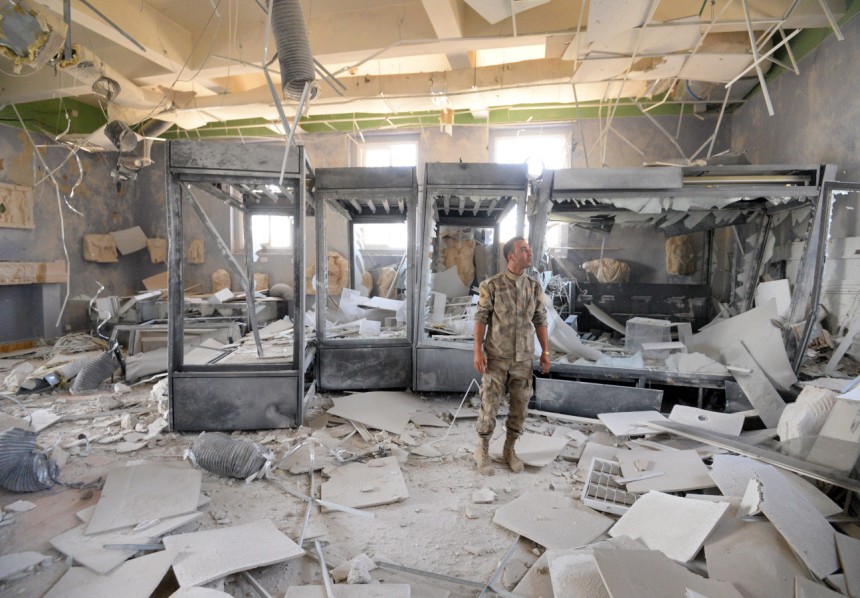
A soldier belonging to Assad’s forces at the National Museum of Palmyra after its reclamation (DPA).
Abdulkarim said, in an interview with the official Syrian Arab News Agency (SANA), that the overall situation is “peaceful to a certain extent,” and that the damages sustained by the interior are essentially capable of rehabilitation, particularly because the management has a cadre of specialists trained to undertake the restoration project and to restore the citadel to its former status.
The Director-General of the foundation spoke about the intention of the management to send a specialized group of effects to Palmyra “immediately to restore security and stability, and to check the scale of the destruction caused by Islamic State terrorists,” as he put it. In particular, he stressed that the two temples, the Temple of Bel and the Temple of Baalshamin, would be under the “supervision of the United Nations Educational, Scientific, and Cultural Organization (UNESCO)” considering Palmyra is listed as a World Heritage site.
The castle of Fakhr-al-Din al-Ma’ani–which is considered one of the most prominent sights and ruins of the city of Palmyra–was, after the shelling of the city, destroyed beyond any other ruin. Similarly, hundreds of ancient artifacts in the National Museum of Palmyra were looted, and the tower tombs (such as the Tower of Elahbel) and the Arch of Triumph (also known as the Monumental Arch of Palmyra) were destroyed.
The Directorate General of Syrian Antiquities, Museums, and Heritage in the interim government condemned “the barbaric military actions of the Syrian Regime and the other face of criminality, the Islamic State, that exposed Palmyra to such destruction.”
The management mentioned in a statement that “this national wealth of antiquities and heritage were a direct target for the obliteration of the temples, tower tombs, and pools of the ancient world throughout the years of the revolution. Today, they return to their criminality with the bombardment of the ancient city of Palmyra and what it contains–between its interior and its precious historical buildings.
According to the statement, the city is considered at risk of the “systematic destruction of cultural heritage, and a war crime cannot remain unpunished.”
The Destruction of Mankind and Stone
When the Islamic State controlled the city, in May of 2015, the Syrian Regime implored the world for help in the preservation of human heritage, arguing that ISIS will destroy these relics. This occurred amidst the opposition and international coalition’s accusations that the Regime had surrendered to ISIS and withdrew without a fight.
The city had lost much of its monuments, which blend the Roman and Greek civilizations, because members of ISIS detonated the ancient Arch of Triumph, as well as the temples of Bel and Baalshamin.
The militants of ISIS also destroyed the statue of the Lion of al-Lat, which dated back to the second century A.C., and two Islamic mausoleums because they are “manifestations of idolatry,” according to the video statements of the Islamic State. Meanwhile, the activists of Assad’s forces accuse them of targeting the citadel of Palmyra and parts of the ancient city with heavy air and artillery strikes during the last attack.
The Temple of Baalshamin, whose construction was completed a thousand years ago, is considered one of the most important ruins of Palmyra, and dates back to the Roman era. With its destruction, ISIS has blown up Roman relics for the first time in the city.
The United Nations Institute for Training and Research (UNITAR) said, “We can confirm the destruction of the main structure of the Temple of Bel, as well as a row of columns directly next to it.” Satellite photos that show the scale of the destruction that overtook the Temple of Baalshamin were published, and it appears that parts of it are greatly damaged or completely destroyed.
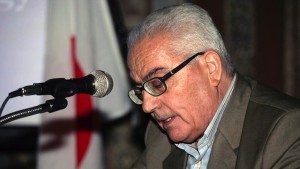
Dr. Khaled al-Asaad, a scholar of Syrian antiquities, who was executed by ISIS in August 2015 (Facebook).
The systematic destruction in Palmyra, executed by members of the Islamic State and following their takeover of the city, is not only limited to its relics and stones. Antiquities scholar Khaled al-Asaad, whose charges include “being a Nusayris-sympathizer and an accomplice to Syrian Intelligence, being the director of idols, having visited Iran to congratulate the victory of the Khomeini revolution, and having a relationship with the director of the security office at the presidential palace of General Hossam Sakr.
Al-Asaad, 82, is considered one of the most prominent Syrian archaeologists of the 20th century, and has about 40 publications on the relics in Palmyra, Syria, and the world. He worked with a number of American, French, German, Italian, etc. archaeological delegations during his many years of work, received a number of local and foreign decorations, and mastered a number foreign languages in addition to the Aramaic language (the language of natural Syria for thousands of years).
The Regime and ISIS Agree To Protect the Relics
After the Regime and its subsidiary militia’s success at tightly controlling Palmyra, the media was allowed to roam the archaeological places to keep the situation in check. However, the interesting thing is that the scale of the losses came in below what was expected. The devastation was limited to specific sections, leaving 80% of the sights of the city steadfastly unchanged and opening the question as to why the Islamic State did not blow up the ancient city as it did the Arch of Triumph and the temples.
The British newspaper “Daily Telegraph” presented in its Wednesday, March 30th issue information on a secret agreement between the Regime and the Islamic State, shielding many of the archaeological sites of the city from destruction.
The newspaper quoted the General-Director of the Syrian Directorate General of Antiquities and Museums, Maamoun Abdulkarim, as saying that the Regime worked secretly with 45 to 50 people within Palmyra, in order to convince the Islamic State not to completely demolish the archaeological sites during the period in which they controlled the city (which lasted ten months). He added that “the Islamic State believes that there will be a popular uprising against it if it demolishes everything, so it did not loot or destroy everything.”
An Unprecedented National Welcoming
The first reactions were from the Russian side, an ally of the Regime, via a telephone conversation between Vladimir Putin and Bashar al-Assad, during which Putin congratulated al-Assad on the reclamation of the city thanks to the military operations of al-Assad’s forces supported by the Russian air force.
The Russian President called for a “revitalization of the relationship between the two countries in order to discuss the situation in Syria,” confirming the importance of preserving the historical city–unique among its kind–for the sake of the global culture.
Putin informed al-Assad that Russia will help in the removal of the mines that were left behind by the Islamic State by way of experts and robots. According to Russian sources from the “TASS” news agency, it is likely that the total number of military engineers, dog trainers, and Russian experts who will go to Syria to help with the removal of mines will reach about 100.
Russia called for the reconstruction of the monuments of Palmyra by way of suggesting a draft resolution to the Executive Committee of the organization “UNESCO.” However, the western nations blocked its issuance, while the official representative of the Ministry of Foreign Affairs of the Russian Federation, Maria Zakharova, expressed her disappointment, accusing the western nations of “indifference for the liberation of Syria from the terrorists” and of “a lack of interest in the cultural heritage that Palmyra represents.”
For his part, al-Assad thanked his counterpart for the Russian’s aerial support of his military operations, stressing that without the Russian aerial support, the “liberation” of Palmyra would have been impossible. The president of the Regime considers control of the city an “important achievement and new proof of the efficacy of the strategy pursued by the Syrian army and its allies in the war against the Islamic State,” he said.
In turn, the United States welcomed, in the words of Secretary of State John Kerry, the expulsion of Islamic State combatants from the city, describing the operation as “a good order,” but he pointed to the change in the way the Syrian Regime is combatting the Islamic State. The United States’ position did not budge from its opposition to al-Assad and his regime.
Kerry stressed that it was too soon to know the influence of this operation on
Syrian peace talks, the second round of which is scheduled, one way or another, for September.
The French position does not diverge from that of the United States. The spokesperson for the French Foreign Ministry, Romain Nadal, welcomed the control of Palmyra, and said that “the liberation of Palmyra from the Islamic State is good news, but we must not forget that the Syrian Regime is responsible for the murder of more than 270,000 people.”
The Italian Minister of Cultural Heritage, Dario Frantzescana, expressed the willingness of the Italian government to send “Blue Helmets” to the city, which is the Italian operations group for the protection of cultural heritage in conflict areas, and was formed last February by the UN.
The Minister explained, “Our Blue Helmets for Culture are prepared to follow through with the protection of the cultural heritage that has been destroyed by international terrorism.” However, they must consider that “UNESCO and the international community must decide whether Palmyra will become the first task of the Blue Helmets, as the UN assigns the specific times and methods of each operation, and determines whether one or more nations will participate in it.”
As for the Syrian opposition, the chief of the High Authority for negotiations, General Assad Al-Zubi, said that the aim of the battle of Palmyra was simply to say that Russia was the cause of its liberation, and consequently, to reinforce the international position. Additionally, he believes that as much as they intervened in Syria to eliminate the Islamic State, they also intervened to demonstrate a militant picture of Assad’s Regime, capable of defeating the Islamic State.
An Abandoned City on its Thrones and Polling Centers for the Stone Mason
When the Islamic State entered Palmyra in the context of its endeavor to expand east of Homs, it made the city its principal center in the governorate, a command that reflected negatively on the city’s population. Thousands of Palmyra’s residents were displaced toward the eastern governorates and the adjacent villages and towns, fleeing from the “oppression” of the Islamic State, as well as the air strikes of Assad’s forces, the international alliance, and Russia alike.
Firas Mola, a media activist and a member of the Emergency Unit in the city of Azaz (which welcomes the displaced people from rural Aleppo and other governorates), spoke about the recent wave of migration (which included most of those who remained in Palmyra) and explained to Enab Biladi that nearly 180 families (1500 people) arrived from Palmyra and its surrounding villages within a few days, but most of them were sent to the governorate of Idlib, after the Afrin Road opened the morning of Wednesday, March 30th.
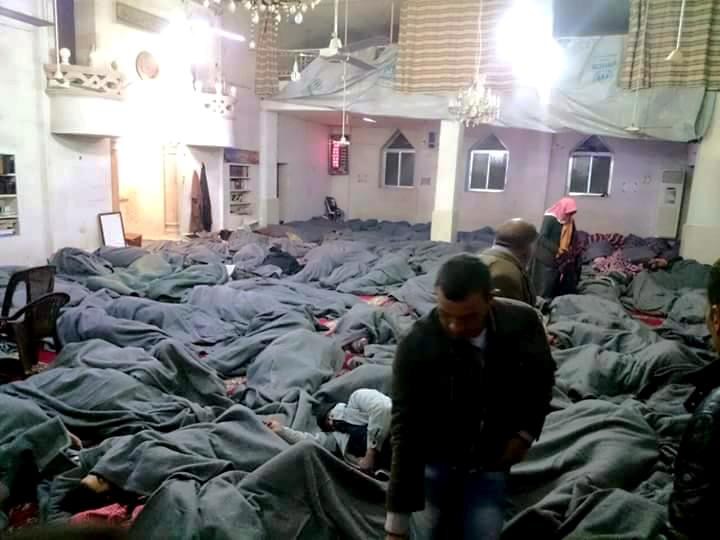
Displaced people from the city of Palmyra, sleeping in a mosque in the northern border city of Azaz, Tuesday 29th of March. (Revolutionaries/Activists)
In a scene reminiscent of the images of the displaced from the northern countryside of Aleppo following the extensive attack by the Syrian Regime and Russian militias and aircraft at the beginning of last February, revolutionary pages presented images of Palmyra’s displaced sleeping on the ground. Some were crammed into a mosque in the city of Azaz, while others went to liberated areas in other governorates or areas controlled by the Regime.
The most recent wave of displacement is the largest one yet, as confirmed by a member of the Coordination Council of the Syrian Revolution in Palmyra, Naser al-Thaer. After the Islamic State’s seizure of the city and the subsequent migration of most of the families there, only five thousand residents remained in Palmyra. However, the main reason for their migration was the beginning of the latest battles of the Regime against the Islamic State, and the continuous targeting of the city by military airplanes and helicopters.
Naser said, in an interview with Enab Biladi, that the revolutionary media has been “negligent” regarding what happened in Palmyra, from its daily massacres and the gradual migration of roughly 97% of the population since the day the Islamic State took control of the city. He explained that Palmyra’s population reached roughly 170,000 inhabitants shortly before the Islamic State took control, 50,000 of whom migrated to Palmyra from other areas, but most of whom have since been displaced: a large portion towards the city of ar-Raqqah and rural Deir ez-Zor and others to Turkey and areas under the control of the Regime.
The few remaining residents of Palmyra were forced to flee by the recent military campaigns, but with the parliamentary elections approaching (scheduled to be carried out on the thirteenth of April), the Regime established polling centers in the empty city.
On Tuesday, March 29th, the Chairman of Syria’s Supreme Committee for Elections, Hisham Al-Shaar, announced a study for the opening of polling centers in Palmyra after its reclamation from the Islamic State, as well as in the governorates of Damascus, Latakia, and Tartus. There is also talk of opening centers for the areas outside of the Regime’s control: in Idlib, ar-Raqqah, Aleppo, Deir ez-Zor, and Daraa.
In light of the fifth consecutive year of the continued war and complicated interactions in Syria, it is not clear whether “security and stability” is going to be the title of the next phase for the Bride of the Desert. Nor is it clear that the displaced will, upon returning to Palmyra, return to the cultural and historical radiance that has been special for centuries.
if you think the article contain wrong information or you have additional details Send Correction
النسخة العربية من المقال
-
Follow us :
Most viewed
- Syrians pack their bags in Turkey
- After European call to engage with Syrian regime, Italy appoints ambassador to Damascus
- Syrian pressures prevent Omar al-Aroub from attending Paris Olympics
- Turkey and Russia discuss resuming patrols on M4 highway
- After Baraa Qaterji’s elimination, Is Syrian regime replacing its economic façade?


















 A
A
A
A
A
A
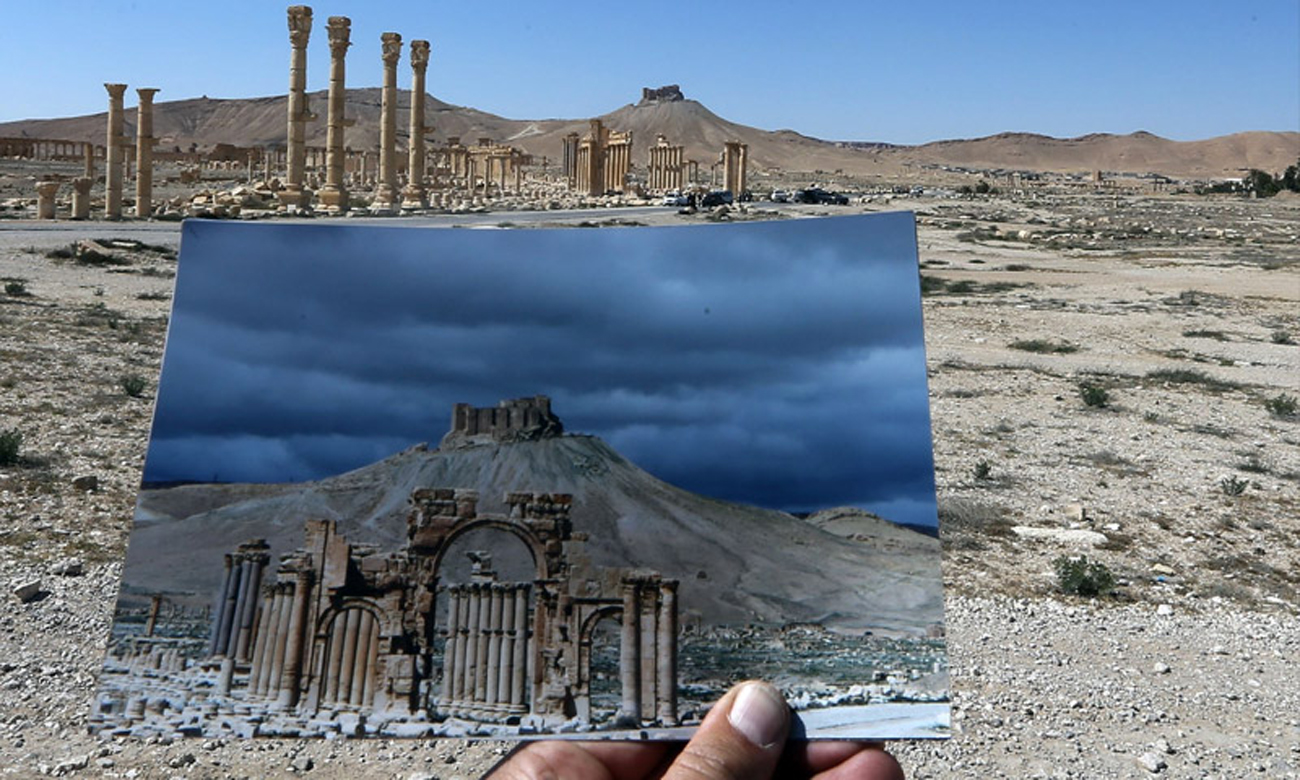
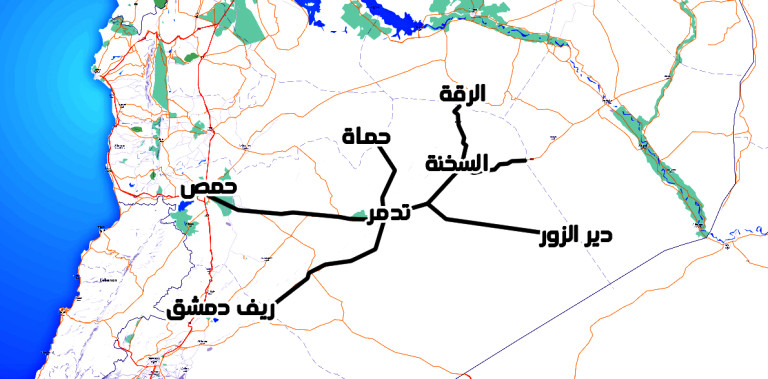




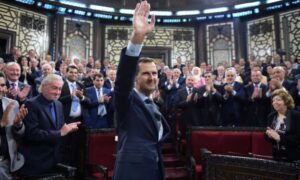



 More In-Depth
More In-Depth